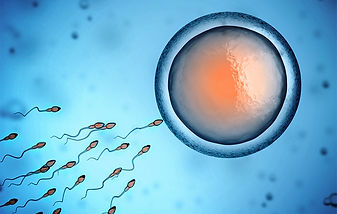
MALE INFERTILITY
Infertility in the male is a common cause of childlessness. Although the incidence of all the causes of infertility in a single clinic will relate to the special interests of the staff in that clinic, it is generally agreed that male problems make up between one‐third to one half of all the factors that contribute to a couple’s problem with conception.
As the vast majority of couples who attend an infertility clinic will include a man, an accurate assessment of that male patient will clearly be very important.
Up to 15 percent of couples are infertile. This means they aren't able to conceive a child, even though they've had frequent, unprotected sexual intercourse for a year or longer. In over a third of these couples, male infertility plays a role.
Male infertility is due to low sperm production, abnormal sperm function or blockages that prevent the delivery of sperm. Illnesses, injuries, chronic health problems, lifestyle choices and other factors can play a role in causing male infertility.
Not being able to conceive a child can be stressful and frustrating, but a number of male infertility treatments are available.
The main sign of male infertility is the inability to conceive a child. There may be no other obvious signs or symptoms. In some cases, however, an underlying problem such as an inherited disorder, a hormonal imbalance, dilated veins around the testicle or a condition that blocks the passage of sperm causes signs and symptoms.


Although most men with male infertility do not notice symptoms other than the inability to conceive a child, signs and symptoms associated with male infertility include:
-
Problems with sexual function — for example, difficulty with ejaculation or small volumes of fluid ejaculated, reduced sexual desire, or difficulty maintaining an erection (erectile dysfunction)
-
Pain, swelling or a lump in the testicle area
-
Recurrent respiratory infections
-
Inability to smell
-
Abnormal breast growth (gynecomastia)
-
Decreased facial or body hair or other signs of a chromosomal or hormonal abnormality
-
A lower than normal sperm count (fewer than 15 million sperm per milliliter of semen or a total sperm count of less than 39 million per ejaculate
In male infertility, a diagnosis needs to be made and the cause of the infertility must be determined before expensive and possibly unnecessary treatment is imposed upon the patient or, in the case of IVF, upon his partner
Treatments For Male Infertility
SPERM RETRIEVAL PROCEDURES (PESA, MESA, TESA, TESE)
PESA/TESA/m TESE In cases where no sperm are present in the ejaculate, sperm can often be retrieved directly from the testicles or epididymis using sperm-retrieval techniques.

SURGERY
Varicocelectomy: varicocele can often be surgically corrected or an obstructed vas deferens repaired.
Vasovasotomy/ Vasoepididymostomy Prior vasectomies can be reversed.
Treating infections
Antibiotic treatment might cure an infection of the reproductive tract, but doesn't always restore fertility.
Treatments for sexual intercourse problems
Medication or counseling can help improve fertility in conditions such as erectile dysfunction or premature ejaculation.
Hormone treatments and medications
Your doctor might recommend hormone replacement or medications in cases where infertility is caused by high or low levels of certain hormones or problems with the way the body uses hormones.
Assisted reproductive technology (ART)
ART treatments involve obtaining sperm through normal ejaculation, surgical extraction or from donor individuals, depending on your specific case and wishes. The sperm are then inserted into the female genital tract, or used to perform in vitro fertilization or intracytoplasmic sperm injection